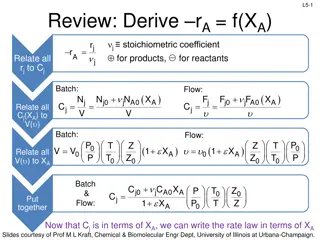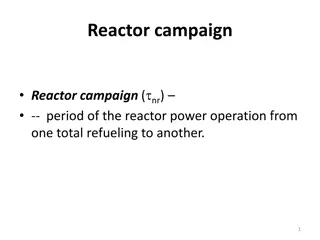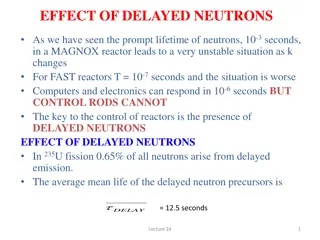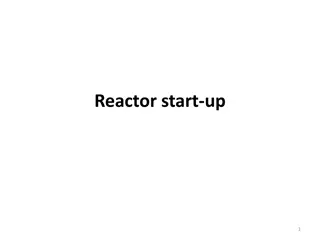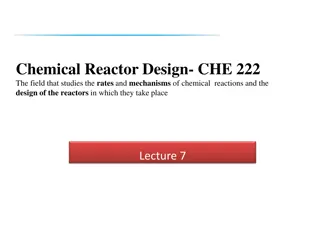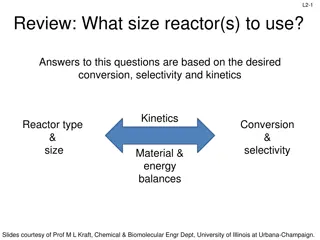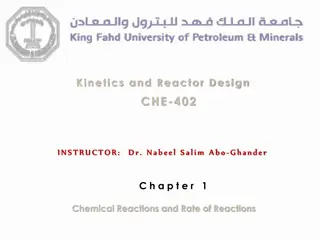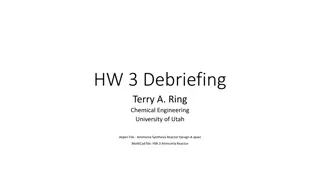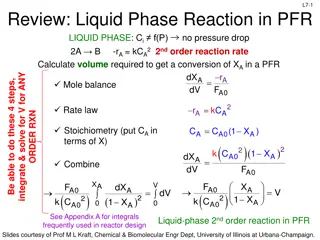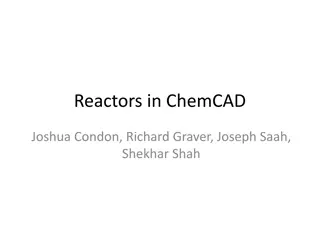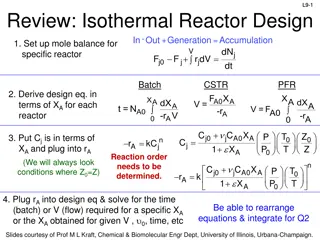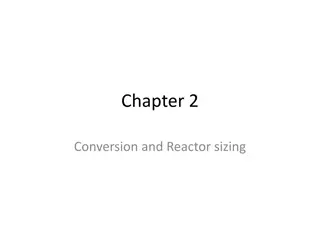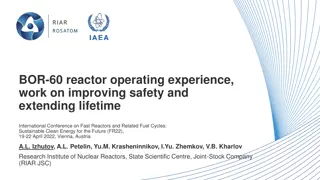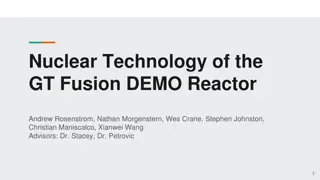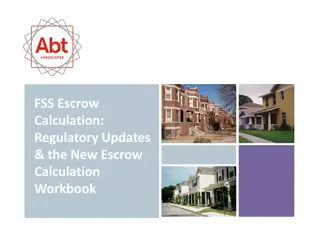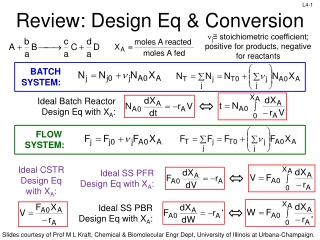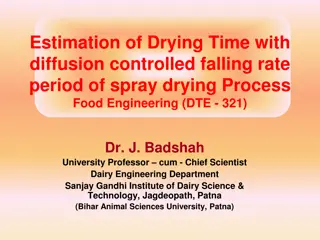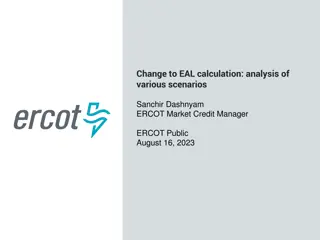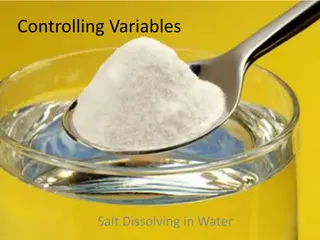Ultraviolet Water Reactor Fluence Rate Calculation Model
This model demonstrates the calculation of fluence rate in an annular ultraviolet water reactor using COMSOL. The purpose is to assess radiation absorption by pathogens based on the fluence rate. Water between two concentric cylinders is considered, with the inner cylinder housing a UV lamp emitting radiation between 250 nm and 260 nm. The model features mesh refinement for accuracy near boundaries and evaluates fluence rate distribution in the UV spectral band.
Uploaded on Sep 16, 2024 | 0 Views
Download Presentation

Please find below an Image/Link to download the presentation.
The content on the website is provided AS IS for your information and personal use only. It may not be sold, licensed, or shared on other websites without obtaining consent from the author. Download presentation by click this link. If you encounter any issues during the download, it is possible that the publisher has removed the file from their server.
E N D
Presentation Transcript
Annular ultraviolet reactor optically transparent water COMSOL
Introduction The purpose of this model is to demonstrate the Fluence Rate Calculation feature with Surface-to- Surface Radiation. The fluence rate is the amount of radiation that a tiny spherical detector would be exposed to at any point in space, divided by the cross sectional area of such a detector. Fluence rate is a key figure of merit because it determines the amount of radiation that pathogens absorb.
Model Definition Water between two concentric cylinders Inner: UV lamp Total power: 40 W emitted between 250 nm and 260 nm Outer: reactor walls considered as totally absorbing (blackbody) Water Considered as optically transparent (no absorption) Refractive index: 1.38 2D-axisymmetric geometry Stationary study
Mesh Definition Because the fluence rate may vary sharply close to the walls, the size of the mesh near boundaries can greatly affect the results accuracy. To highlight this, two meshes are used: with and without boundary layers at the radial surface of the UV lamp. Mesh without boundary layer (left) Mesh with boundary layers (right).
Results The fluence rate in UV spectral band is maximum at the UV lamp surface and is inversely proportional to the radius. The mesh refinement next to the UV lamp provides a more accurate description of the fluence rate profile. Evaluation of fluence rate in UV spectral band using mesh without boundary layer (left) and mesh with boundary layers (right).
Results: E0 Field Fluence rate variable E0 is stored at Gauss points (0 discretization order by default) as a piecewise constant field. Using a fine plot resolution (green curve), the piecewise nature of E0 is visible. The slope of the curve between each step depends on the plot resolution. Evaluation in middle plane of the lamp of radial fluence rate distribution in UV spectral band using mesh without boundary layer with Normal Plot Resolution (blue curve) and Custom Plot Resolution set to 20 (green curve).
Results: fr_band Function Variable fr_band can also be used to visualized the fluence rate. fr_band (green curve) evaluates fluence rate at the exact requested position. At Gauss points, E0 (blue curve) and fr_band are equal. fr_band should be evaluated strictly inside the domain, not at boundaries. On this graph, points closer than 1e-6 cm from any boundary have been excluded. fr_band values are not cached and their evaluation can be computationally expensive. Evaluation in middle plane of the lamp of radial fluence rate distribution in UV spectral band using mesh without boundary layer with variables E0 (blue curve) and fr_band (green curve).
Results: Accurate Fluence Rate Plots E0 with refined mesh Improves accuracy where the mesh is finer E0 is updated as the solution is computed E0 with high discretization order Improves the accuracy on the whole domain without changing the mesh E0 is updated as the solution is computed Evaluation in middle plane of the lamp of radial fluence rate distribution in UV spectral band. Comparison of different options to improve the accuracy.
Results: Accurate Fluence Rate Plots fr_band with a fine plot resolution Improves the accuracy at the evaluation points without changing the mesh fr_band is updated as the evaluation is triggered without having to compute the solution again Evaluation time can be significant if the evaluation domain is large Evaluation in middle plane of the lamp of radial fluence rate distribution in UV spectral band. Comparison of different options to improve the accuracy.


